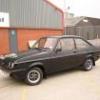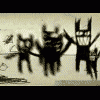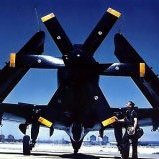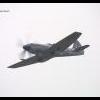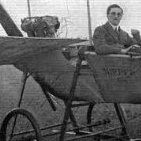-
Posts
257 -
Joined
-
Last visited
Profile Information
-
Gender
Male
-
Location
redditch
Recent Profile Visitors
3,515 profile views
modelmaker's Achievements

Established Member (3/9)
150
Reputation
-
modelmaker started following Oleo Struts
-
I'm quite partial to 11 as well, but they also do a chrome silver which I find really good specifically for this job.
-
modelmaker started following Make your own metal rod , Mottling Luftwaffe Aircraft , Inkjet decal paper and 2 others
-
Right, I am VERY long way from the best airbrush user, and these pictures aren't EXACTLY mottling, but this is my personal experience. I've been airbrushing models for 30 years and am ALWAYS learning (if not always improving). I think that thinning paint too much isn't the way to go; all 3 of these were painted in the last 3 or 4 years, the 88 and the 219 were exclusively enamel (Humbrol) and the 262 was more recent, and largely Gunze. I could almost certainly do better with the Gunze with experience, and in all 3 cases that meant NOT thinning too much, in fact rather the opposite. I can't tell you exactly what pressure I ever use, but I keep turning the regulator down until it's REALLY low (by listening to the airflow). I'm getting used to acrylics and (personally) find Gunze and Tamiya best (although there are SO many paints I haven't tried). Hope this helps.
-
Good morning modellers! I've been using Inkjet decal paper for ages now, from time to time. SOOOO handy for those odd jobs (often rectifying cock-ups in my case). AGES ago I bought some sheets of white and clear paper from a company on eBay, and found these to be excellent. I've got some clear left but have just about run out of the white. Whatever make this was it was opaque and STRONG, unlike several replacements I have tried. I bought some quite expensive stuff from a well known model emporium which is both semi transparent and stretchy (for want of a better word). The stuff I had behaved EXACTLY like a kit decal. So, I have 1sheet of clear left and the back of the sheet looks like the photo. I've looked through my buying record on eBay but can't find from whom i bought it. Any thoughts greatly appreciated, thank you!
-
- White paper
- Opaque
-
(and 1 more)
Tagged with:
-
It occurs to me that I've got a little 1/72nd Revell Red Arrow Hawk to do and if the transfers are as good as my mate's '32nd Hawk then the white lettering stands a sporting chance of being pink. I have printed lettering in the past although not white, ALTHOUGH I have had some success with printing, on white paper, 'around' the lettering, then applying this to the model. If I keep the red fairly tight around the white letters (ie the white decal paper) then it's 'just' a case of VERY carefully airbrushing up to (or rather away from) the lettering. Even if the printed colour isn't quite right it's not too obvious (on the few times I've done this) ALTHOUGH I've not tried it on anything quite as small and nothing i make is really that special. I'm happy though. Not sure if this is any help, but it's worked for me before.
-
Not an answer to your question but we were in Regensburg a few weeks ago. A lovely medieval town and as near as damit original, certainly the centre, which I hadn't expected the first time we went there. The Messerschmitt factory (I'm not sure if there were actually two of them) were far enough that the town got really lucky. Well worth a visit. Hope you get an answer or at least an idea or two.
-
Great ideas all! There is a source of very strong, straight steel wire which I regularly use as a splint or pin for jobs like repairing broken off undercarriage legs. It is the central wire core of Bowden cable (for example bicycle brake or gear cable). I have some 6" lengths left over from my pre retirement days, and by carefully un-peeling the twisted outer wire you are left with a very useful piece of hardened steel wire (please use goggles when cutting!!)
-
modelmaker started following Tips & Tricks
-
A minefield of confusion! Many thanks.
-
modelmaker started following Filler advice and Orange Arrows
-
I apologise in advance because I know Red Arrow colours have been done to death, but I'm concerned that having read TONS of occasionally contradictory and sometimes confusing advice the otherwise very enjoyable 1/72nd Revell Hawk I am building is looking distinctly orange. Whether artificial or daylight my wife actually asked "should a Red Arrow be orange?" I made a little test piece of the various model paints I've accumulated for this one tiny aircraft, namely Xtracolour enamel 'Red Arrows signal red', Humbrol 174 'signal red', and Humbrol 238 (which I've seen mentioned as a very good match in various places). These were the enamels (which I prefer for gloss finishes). To a greater or lesser extent they look like orange to me. Worst of all was a bottle of Xtracryics XA1014 which really IS orange, perhaps with a touch of red. I haven't got a real Red Arrow residing anywhere near me as far I know, but trying to picture a Hawk in the distance (remember I'm building the tiny '72nd Arrow) I can't remember thinking "they're orange". I know colours and scale colour and light and shade and distance and eyesight (I'm officially not colourblind) etc are also subjective, but I'll likely get laughed out it Britmodeller if I present an orange arrow. Or I THINK I will. Or am ii wrong about all these carefully formulated paints? Any advice appreciated, many thanks.
-
Personally I gave up on the green toothpaste years ago. It's crumbling through models I built 20 years ago. I've long used superglue with a touch of talc mixed in to make a thin-ish paste which can be sanded, drilled, scribed and more. I HAVE just recently begun using UV curing glue (a bit like dentists use nowadays) for all sorts of jobs. It's quite a thick consistency and dries REALLY slowly until you point a UV torch at it, after which it will dry in seconds. It is a very useful filler. Hopefully you will get many many replies. Hope this helps.
-
I needed a very thin circle on an Me-163 nose, so similar to a spinner. I have something called a compass cutter, just a cheap thing I bought from 'the Works' shop in town a few years ago. Take a piece of masking tape and try to mask round the spinner. You can't actually do a proper job of it, but just do a rough job. Scribe a pencil line round the tape at about the level where you want the band to be on the spinner. Now take the tape off, and lay it flat on a cutting mat. This gives you a rough but reasonable idea of the radius of your 1mm band. Now, I didn't try to mask anything, but rather I cut a circle with my compass cutter on a piece of red transfer (or decal) sheet (I save all my old transfers) then increased the radius by a mm or so and cut a second circle. It wasn't quite right when I I tried it so I tried again until I got it right. If you get it reasonably right it will just wrap round beautifully. The BIGGEST issue will be whether the compass cutter will cut a small enough circle for the small scale we use. If you get it right it's a really handy trick. Best of luck!
-
Well, I thank you all for your help. Researching any Luftwaffe colour scheme is always full of joy! I'm planning to do the unpowered version in British markings because I've got a spare set, I'm building 3 of these little beasties, and it'll add a bit of variety. Thanks for everyone's help, any more thoughts gratefully received.
-
I promise I tried the search! Got results for tanks and B17s and more! Google searching often brings me here of course, but I can't find a reasonably confident answer to what colour scheme the Devil's Sled that he flew was wearing. There are many models pictured, and b/w pics, and a painting by Michael Turner. I'm sure in the grand scheme of life it won't matter whether I paint it in RAF colours or the Luftwaffe, although the painting suggests perhaps at least the fuselage had a 74 and/order over 76. Any thoughts gratefully received.
-
Thanks Mr Hook, beats the heck out of Revell's paint instructions. I'm slightly cross I didn't think of Cyber modeller myself! Very kind.
-
Too flipping right! A pal yesterday was recounting how I'd given him an old Airfix B57 years ago, then posted a missing part to him. Not a clue, CANNOT remember.
-
One day, if I live long enough, I'll get it right! DOH! Many thanks.




